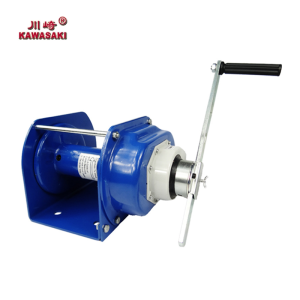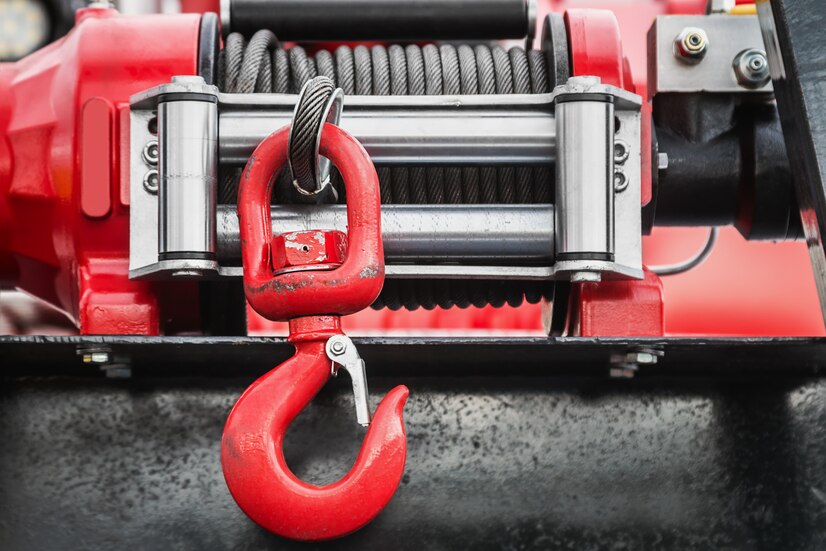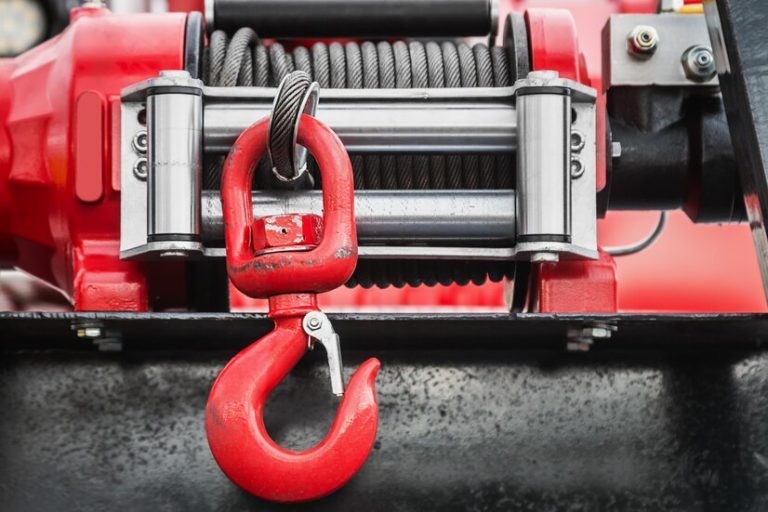Manual winches serve a range of purposes, in industries for hoisting and dragging weights efficiently with advantage at play. With their construction and easy-to-use nature they play a role in sectors like construction towing and leisure pursuits. The maximum weight capacity of these tools is a concern, in high-pressure situations. To fully tackle these issues in detail it is important to delve into the factors that affect the weight capacities of winches; determining how these capacities are computed and dispelling any misconceptions surrounding them.
Understanding Manual Winches and Their Capabilities
Definition and Applications of Manual Winches
The manual winch, with a lever or hand crank, is crafted to haul or raise items without relying on electricity or other power supplies. These tools find use in scenarios such as trailers for moving boats construction sites for lifting materials and even, in manufacturing settings where shifting bulky loads is crucial. Their versatility and dependability shine through in a range of industries. When choosing a winch, for your needs it’s important to take into account the demands of your job, such, as the weight involved the distance to be covered and the environmental conditions present.
Market Overview: A Look at Apollo’s Range of Manual Winches
Apollo has established a presence in the winch industry as a top player known for its durable and high-quality products that meet diverse needs effectively. The manual winches, by Apollo, prioritize safety and efficiency. Are built to handle capacities based on specific requirements. Their dedication to advancing technology and delivering top-notch performance is evident, in their product lineup which includes hand winches customized for operating conditions. Apollo’s skill, in producing and creating winches guarantees that individuals can discover solutions to fulfill their lifting and pulling requirements securely.

Factors that Influence Weight Limits of Manual Winches
Mechanical Components and Materials Used
Building a winch relies heavily on its performance and capacity to carry weight effectively. The materials used in the gear assembly and brake systems play a role, in determining the winchs weight bearing capacity. Besides the choice of materials used in construction, mechanical parts like pulleys and attachment points also play a role in enhancing the winch’s durability and efficiency. Adhering to industry standards, for each component is vital to uphold the winch’s specified weight limit.
Design Specifications: Gear Ratios, Drum Capacity, and More
Various manual winches have specifications that affect their lifting capacity directly. The gear ratios are crucial, in deciding the weight a winch can handle. For example, a higher gear ratio allows a winch to pull loads with ease thus expanding its weight limit. Moreover, the drum capacity, which determines how much cable or rope can be stored on it also plays a role, in the winch’s ability to handle weights. Always make sure to check the manufacturer’s specifications. For example those, from Apollo. To be certain you’re choosing the winch for your needs.
Environmental and Operational Conditions
Temperature and Weather Impact
Temperature and weather conditions have an impact, on how a manual winch functions. The mechanical strength and flexibility of the winch parts can be compromised by temperatures. This could reduce the weight that can be safely lifted. It’s crucial to account for these factors when organizing an operation. In outdoor environments where conditions can change drastically.
Load Angle and Surface Conditions
The way you position a load can impact how well a manual winch works. When you’re pulling from an angle you’ll need force, which could go over the winch’s limit if you’re not careful. Also, different surface conditions, like mud or slopes can throw in factors that might mess with how the winch works. Knowing about these things can make sure the winch is used safely and at its best.
Calculating the Safe Weight Limits for Different Types of Loads
Static vs. Dynamic Loads: What’s the Difference?
When determining weight capacities, for situations it’s crucial to distinguish between static and dynamic loads. A static load refers to something that stays stationary while a dynamic load involves movement or impact. Manual winches are generally designed for handling loads. Dynamic loads can place extra strain on the winch, which could cause it to fail if not accurately assessed. Recognizing these differences is essential, for maintaining practices.
Formulae and Methods for Calculating Safe Weight Limits
Safety Margins and Multipliers
When figuring out the weight for using a manual winch device is a common practice, among operators who often refer to specific formulas that consider safety margins and other factors. Usually suggested by manufacturers is to multiply the working load limit by a factor to accommodate situations or different operating conditions. This method boosts safety measures in environments where there are risks involved. For instance, applying a safety factor of 1. Five to 2 times the working load limit can reduce risks. Ensure that the winch functions as intended.
Common Myths about Manual Winch Capacity
Breaking Strength vs. Working Load Limit (WLL)
In the winch industry terminology is often misunderstood, by people, with the breaking strength and the working load limit (WLL). The breaking strength indicates the load a winch can handle before failing whereas the WLL is a safety precaution set by manufacturers for daily use to avoid accidents caused by overloading.
Overloading: Understanding the Risks
Using a winch, beyond its capacity is risky. Can jeopardize the overall system’s reliability. The misconception that a winch designed for a weight can sustain use without problems is incorrect. Exceeding the Working Load Limit (WLL) regularly can result in equipment breakdown leading to harm or damage. Ensuring awareness of these constraints is crucial, for maintaining safety.
In summary, users must understand the factors that affect the efficiency and load capacities of winches. By taking into account factors such, as the quality of materials detailed designs, and environmental influences the operators can safely use tools, like Apollo’s selection of winches. Balancing these aspects guarantees operations while reducing the risks linked with weight limitations.
Apollo’s Leading Manual Winch Products
Apollo is recognized as a leading producer, in the winch industry with a range of top-notch winches known for their dependable performance and quality output in various fields like construction and leisure pursuits. Safety and efficiency are priorities, for Apollo’s offerings which are carefully crafted to meet application requirements with the use of cutting-edge technology and premium materials to guarantee reliability across different working conditions. Apollo’s manual winches provide a range of features that support durability and functionality to meet your needs, for lifting or, on-the-go use.
Overview of Popular Models: Features and Specifications
Product A: Specifications, Weight Limit, Use Cases
A popular product, from Apollo, is the KAWASAKI HAND WINCH GPWSeries which stands out for its quality features and durability. The sturdy lever handle provides flexibility in usage making it a great choice for tasks. Designed for confined areas the GPWSeries can manage loads of up to 1500 pounds for tasks like recovering off-road vehicles or leisure activities. The sealed gearbox protects against debris ingress maintaining performance, in conditions. Users, like that they can change the handle length to suit their needs and the situation they’re in.
Product B: Specifications, Weight Limit, Use Cases
In addition, to that Apollo introduces the NW Series Open Winch which is perfect for demanding tasks. It can lift loads from 5 tons to 300 tons. Comes with an electric magnetic brake system that ensures both speed and security. The performing galvanized wire rope of the NW Series enhances safety and durability making it well-suited for uses, like construction sites and loading docks. Furthermore, the drum structure is designed to support layers of wire rope enabling individuals to handle a variety of lifting duties effortlessly.
Safety Practices When Using a Manual Winch
Ensuring safety is crucial when using a winch to reduce risks and maintain functionality effectively to prevent accidents and equipment damage.
Regular Maintenance and Inspection Requirements
Regular upkeep is crucial, for keeping things running smoothly and efficiently—at least that’s what the experts say! Make sure to give all the parts a clean and check for any wear and tear regularly to avoid any hiccups down the line. Before you fire up that winch for your job adventure take a peek at it to make sure everything looks tip-top and no red flags are popping up. By following the advice, from the Apollos maintenance manual, you can not only prolong the life of your trusty manual winch but also rely on its performance whenever you need it most.
Lubrication and Component Check-Up
Ensuring that moving parts are properly lubricated is essential to prevent friction and wear and keep them operating for a period of time. Regular maintenance checks can help detect any problems and allow operators to address maintenance issues proactively instead of waiting for them to worsen. Paying attention to these details consistently not only promotes safety but also improves the efficiency of the winch overall.
Cable and Hook Inspection
Before using the winch as a measure it is essential to examine the cables and hooks carefully, for any signs of wear and tear such as fraying and twists in the wire rope since these flaws can greatly impact the weight limit capacity The hooks also need to be regularly inspected for any distortions and must have a dependable locking system in place Ensuring that all parts are in top-notch condition is crucial, for protecting both operators and equipment from possible risks while lifting objects
Industry Regulations and Standards for Safe Usage
Manual winch operators must comply with established industry regulations to promote safe practices. Regulatory bodies set forth guidelines encompassing the design, usage, and maintenance of manual winches.
Regulatory Bodies and Compliance Requirements
Organizations such as OSHA (Occupational Safety and Health Administration) and ANSI (American National Standards Institute) provide comprehensive guidelines that govern manual winch usage in various industries. These regulations not only focus on the safe operation of winches but also require adequate training and certification for operators to ensure they are well-versed in safety practices. Compliance with these standards is crucial for mitigating liability and fostering a culture of safety within the workplace.
Certification Processes
Certification processes validate that the equipment meets the necessary safety and performance requirements. This may include testing for load capacity, operational efficiency, and safety features. Manufacturers like Apollo undergo these rigorous assessments, demonstrating their commitment to producing safe and reliable manual winches for the market. Such certifications offer users assurance that the products they are operating have undergone standard testing, further enhancing safety during use.
In summary, effective weight management and adherence to safety practices are vital when utilizing manual winches. Understanding the features of Apollo’s leading manual winch products, conducting regular inspections, and following industry regulations can help enhance operational efficiency while minimizing risks. By investing time in training, maintenance, and compliance, users can harness the full potential of manual winches in a secure manner.


